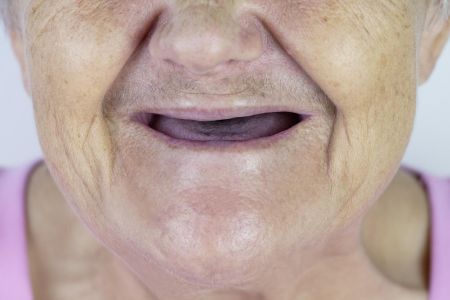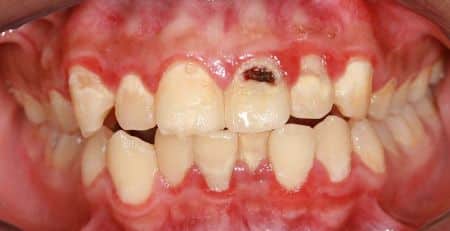Table of Contents
Are you hesitant to smile publicly due to a damaged tooth or discolouration? A professional Cosmetic Dentist might offer the perfect solution to enhance your smile by exploring the options of dental crowns vs. porcelain veneers.
The field of cosmetic dentistry has made significant strides in transforming smiles, providing individuals with a range of treatments to improve the aesthetics of their teeth.
When considering Dental Crowns vs Porcelain Veneers, it’s important to understand that both are popular dental restorations aimed at improving the appearance and functionality of your teeth, yet they are designed for different situations.
Dental crowns and porcelain veneers are two of the most effective treatments in cosmetic dentistry, each offering a unique approach to restoring and beautifying teeth.
Whether it’s concealing discolourations, mending chips, or reshaping an uneven smile, the choice between dental crowns and porcelain veneers depends on the specific needs and goals of the patient.
What is a Dental Crown?

A dental crown is a dental restoration that fully encircles or caps a tooth or dental implant.
Crowns are often needed when a large cavity threatens the ongoing health of a tooth. They are typically bonded to the tooth using dental cement.
Crowns can be made from many materials, usually fabricated using indirect methods. Crowns are used to improve the strength or appearance of teeth.
Types of Dental Crowns
Dental crowns, a fundamental aspect of restorative dentistry, offer a versatile solution for many dental issues by fully encircling or capping a tooth or dental implant. The materials used for these crowns vary, each with unique benefits and applications, catering to different needs and preferences.
Metal Crowns
Metal crowns crafted from gold, palladium, nickel, or chromium are celebrated for their remarkable durability and capacity to withstand biting and chewing. Despite their strength, they are more visually conspicuous than their porcelain or ceramic counterparts, making them a practical choice where esthetics are less concerned.
Porcelain-Fused-to-Metal (PFM) Crowns
Porcelain-fused-to-metal (PFM) crowns strike a balance between strength and appearance. These crowns boast a metal structure covered with a porcelain layer, offering a stronger bond and a more tooth-like colouration than full porcelain crowns.
All-Ceramic or All-Porcelain Crowns
For those seeking a crown that closely matches the natural colour of teeth, all-ceramic or all-porcelain crowns are unmatched. These crowns are especially suitable for individuals with metal allergies, providing an aesthetically pleasing solution without compromising health.
Zirconia Crowns
Zirconia crowns represent a blend of metal’s strength and porcelain’s beauty, fabricated from zirconium dioxide—a material known for its exceptional durability and strength.
Stainless Steel Crowns
Stainless steel crowns serve a specific role. They are often used as a temporary measure on permanent teeth. They protect a tooth or filling while a more permanent crown is being crafted, ensuring the tooth’s integrity in the interim.
When Are Dental Crowns Needed?
Dental crowns are necessary in various scenarios, addressing both functional and aesthetic dental concerns. They protect weak teeth from further damage, such as those at risk from decay or existing cracks.
Crowns restore the form and function of teeth that have broken or been severely worn down. A crown can provide the necessary support and coverage when a tooth has a large filling and minimal natural structure remaining.
Additionally, crowns are pivotal in anchoring dental bridges, covering dental implants, and improving the appearance of misshapen or severely discoloured teeth. Beyond restorative purposes, crowns are also employed for cosmetic modifications, enhancing the overall appearance of one’s smile.
Dental crowns are a cornerstone of dental treatment plans, offering protective and restorative solutions while catering to cosmetic desires. Their application is diverse, addressing a wide range of dental issues with materials and techniques that have evolved to meet patients’ complex needs.
The procedure of getting a dental crown
Getting a dental crown typically involves several steps and may require multiple visits to the dentist. Here’s an overview of the process:
- Consultation: The first step is to schedule a consultation with your dentist. They will examine your teeth and determine if a dental crown is the right treatment.
- Tooth Preparation: During the first appointment, the dentist will numb the area around the affected tooth and remove any decay or old filling material. The tooth will be reshaped to create space for the crown.
- Impression: After the tooth is prepared, an impression of the tooth and surrounding teeth will be taken. This impression creates a custom crown that fits perfectly in your mouth.
- Temporary Crown: While the permanent crown is being made in a dental laboratory, a temporary crown will be placed over the prepared tooth to protect it.
- Crown Placement: Once the permanent crown is ready, you will return it to the dentist for placement. The dentist will check the fit and appearance of the crown before permanently cementing it in place.
- Final Adjustments: The dentist may make some final adjustments to ensure the crown fits comfortably and aligns with your bite.
- Aftercare: After getting a dental crown, it is essential to care for it, just like your natural teeth. Regular brushing, flossing, and dental check-ups will help maintain the crown’s longevity.
It’s important to follow your dentist’s instructions for aftercare and attend regular dental visits to ensure the crown remains in good condition and continues to protect and strengthen your tooth.
What are Porcelain Dental Veneers?

Porcelain veneers, on the other hand, are thin shells that are placed over the front surface of the teeth to improve their appearance. Veneers are typically used to correct cosmetic issues such as discolouration, chipping, or irregularly shaped teeth. They are made of a thin layer of porcelain bonded to the teeth’ front surface, requiring less tooth structure to be removed than dental crowns.
Porcelain Veneers are a thin 1 to 2mm thin porcelain material placed over the surface of a tooth.
Veneers improve the appearance of chipped, cracked or discoloured teeth that cannot be fixed by conventional teeth whitening methods.
Porcelain veneers mimic natural teeth well. They are stain-resistant and, like crowns, can often last ten years.
However, a porcelain crown may be better in severe damage or tooth decay cases.
The procedure of getting porcelain veneers

Getting porcelain dental veneers involves several steps to achieve a beautiful and natural-looking smile. Here’s a detailed overview of the process:
- Consultation: The first step is to schedule a consultation with your dentist. During this appointment, you will discuss your smile goals and concerns, and the dentist will determine if porcelain veneers are the right option for you.
- Examination and Planning: Your dentist will examine your teeth and take X-rays to ensure your teeth and gums are healthy and suitable for veneers. Together, you will plan the veneers’ desired shape, size, and shade to achieve your desired outcome.
- Tooth Preparation: In most cases, a thin layer of enamel (usually less than a millimetre) is removed from the front surface of the teeth receiving the veneers to create space for the veneers and ensure a proper fit. Local anesthesia may be used to numb the area during this process.
- Impression: After tooth preparation, your dentist will take an impression or mould of your teeth. This impression will be sent to a dental laboratory where skilled technicians will craft your custom porcelain veneers.
- Temporary Veneers: While your permanent veneers are being fabricated, your dentist may place them to protect your teeth and improve their appearance.
- Veneer Placement: Once your custom veneers are ready, you will return for their placement. Your dentist will check the veneers’ fit, shape, and colour before permanently bonding them to your teeth.
- Bonding: The dentist will use a special adhesive to bond the veneers to your teeth. A curing light may be used to harden the adhesive quickly.
- Final Adjustments: After the veneers are bonded, your dentist will make any necessary adjustments to ensure they fit comfortably and harmoniously with your bite.
- Aftercare: Once your porcelain veneers are in place, it’s important to maintain good oral hygiene practices, including regular brushing, flossing, and dental check-ups. Porcelain veneers are durable and stain-resistant but require proper care to ensure longevity.
Your nearest dentist can determine when to get Dental Crowns vs Porcelain Veneers.
Porcelain dental veneers can dramatically improve the appearance of your smile by correcting teeth imperfections such as discolouration, chipping, gaps, and misalignment. By following your dentist’s instructions for aftercare and maintaining regular dental visits, you can enjoy the benefits of your new radiant smile for many years.
Please book your appointment at any of our clinics to see one of our professional cosmetic dentists today. Regain that Amazing Smile!
In summary, dental crowns are typically used for therapeutic purposes to protect and strengthen damaged or weakened teeth.
In contrast, porcelain veneers are used mainly for cosmetic purposes to improve the appearance of the teeth.
Your dentist can recommend the best option for your specific situation based on the extent of damage or cosmetic issues, the health of the tooth, and your overall dental health.









